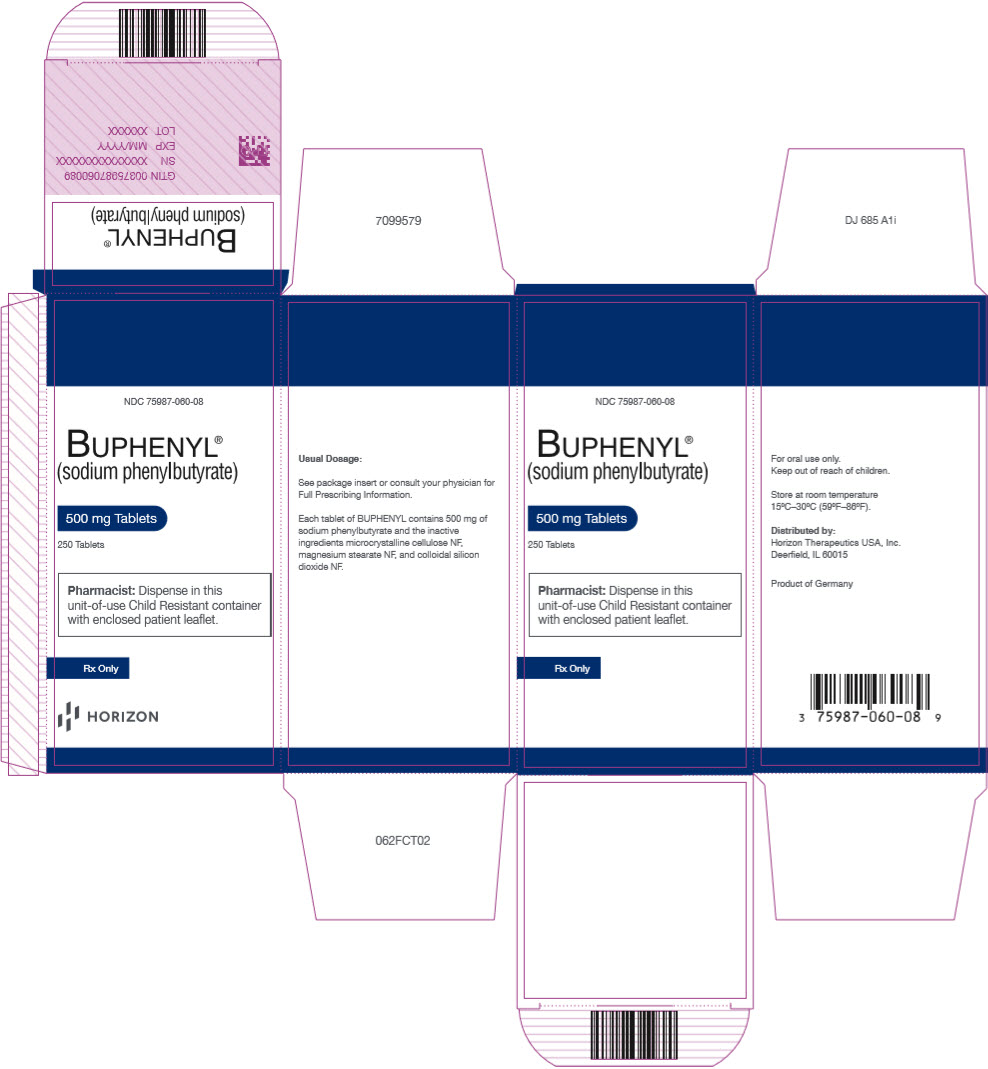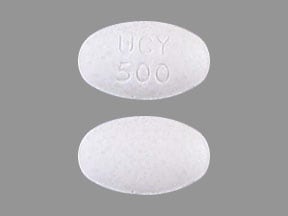Buphenyl
Generic name: sodium phenylbutyrate
Drug class: Urea cycle disorder agents
Medically reviewed by A Ras MD.
What is Buphenyl?
Buphenyl is a drug that helps to prevent ammonia from accumulating in the blood. Buphenyl aids the body in eliminating substances that produce ammonia. However, despite drug treatment, blood ammonia levels may become elevated periodically and there may be episodes of altered brain function in association with these ammonia elevations. Patients who have disease onset as newborns have a high incidence of mental retardation. Medical attention should be obtained as soon as signs appear (see “What are urea cycle disorders?”). Buphenyl may be used as life-long therapy or as a temporary measure until liver transplantation is performed.
What diet should I or my child follow?
In addition to taking Buphenyl, it is equally important that a prescribed diet be followed. Because there is great variability in the severity of urea cycle disorders, each patient’s diet should be custom designed by a physician and a nutritionist. Because the diet is so important, it is recommended that the prescribed diet be discussed with a nutritionist who is familiar with urea cycle disorders.
Description
BUPHENYL (sodium phenylbutyrate) Tablets for oral administration and BUPHENYL (sodium phenylbutyrate) Powder for oral, nasogastric, or gastrostomy tube administration contain sodium phenylbutyrate. Sodium phenylbutyrate is an off-white crystalline substance which is soluble in water and has a strong salty taste. Sodium phenylbutyrate also is freely soluble in methanol and practically insoluble in acetone and diethyl ether. It is known chemically as 4-phenylbutyric acid, sodium salt with a molecular weight of 186 and the molecular formula C10H11O2Na.
Chemical Structure:

Each tablet of BUPHENYL contains 500 mg of sodium phenylbutyrate and the inactive ingredients microcrystalline cellulose NF, magnesium stearate NF, and colloidal silicon dioxide NF.
Each gram of BUPHENYL Powder contains 0.94 grams of sodium phenylbutyrate and the inactive ingredients calcium stearate NF, and colloidal silicon dioxide NF.
What is the most important information I should know about Buphenyl?
Buphenyl is prescribed along with changes in diet for long-term treatment of urea cycle disorders. Buphenyl can only be obtained with a prescription from your doctor.
Buphenyl must be taken exactly as the doctor prescribes; do not increase or decrease the dose of this medication without the doctor’s approval.
What are urea cycle disorders?
Urea cycle disorders include a group of diseases, each having a specific liver enzyme deficiency. Because they are inherited, other family members may be affected. These disorders vary in severity and may be first detected at various ages, from newborn infants to adults. They lead to increased amounts of ammonia in the blood, which may cause disturbed brain function and severe brain damage. Typical signs of the disease are decreased mental awareness, vomiting, combativeness, slurred speech, unstable gait, and unconsciousness.
The diagnosis of urea cycle disorders requires special laboratory tests. These typical signs of the disease may recur after the diagnosis is made if the condition is not under control. If they do, the doctor should be notified immediately because this is a medical emergency. An infection can cause the condition to go out of control. Therefore, if a fever develops, the doctor should be seen immediately.
A patient or carrier of these disorders should wear a Medic Alert tag stating the diagnosis. In the event that the patient has a sudden, rapid accumulation of ammonia in the blood, and, therefore, in the brain, leading to unconsciousness, the doctor will be alerted to treat the disease properly.
Periodically, depending upon the severity of a particular patient’s urea cycle disorder, it will be necessary to perform blood tests. These include plasma ammonia, plasma amino acid levels, and other more routine blood tests to evaluate nutritional status.
Who should not take Buphenyl?
Buphenyl is prescribed only for patients with urea cycle disorders. It is not to be used for any other reason. Keep the medication in a safe place where children cannot reach it.
What other medical conditions may also be present that could increase the risk of taking Buphenyl?
Heart failure or decreased kidney function may lead to retention of the sodium content of Buphenyl with potentially serious consequences such as worsening heart failure, high blood pressure, and swelling. If these medical conditions are present, the doctor will determine if your child should take Buphenyl.
How should I take Buphenyl?
The dose of Buphenyl prescribed for adults and children is based upon the patient’s weight or size. It is very important that the full amount prescribed for any 24-hour period be taken. If a dose is missed it should be administered as soon as possible that same day. The total daily dose should be administered in equally divided amounts with meals.
What should I avoid while taking Buphenyl?
Patients with urea cycle disorders usually should not take Depakene (valproic acid), a drug sometimes prescribed for seizure disorders, or Haldol (haloperidol), a drug used to treat certain types of psychiatric or neurologic disorders. Both of these drugs have been reported to increase blood ammonia levels. Steroids may break down body protein, thereby increasing blood ammonia levels. The doctor should be consulted before administering medications containing steroids.
What medications may affect the way the body breaks down the drug?
Probenecid, a medication used to treat gout, may affect the way the kidneys excrete Buphenyl (consult the doctor for details).
What are the possible side effects of Buphenyl?
The most common side effect reported in premenopausal women taking Buphenyl was absent or irregular menstrual periods. Decreased appetite was reported in 4% of all people treated. Body odor and bad taste were each reported in 3% of all patients treated.
A breakdown product of Buphenyl has been associated mainly with sleepiness and light-headedness. Because these symptoms may also be due to the urea cycle going out of control, a doctor should see the patient immediately if these symptoms occur, so the cause can be determined. Blood tests should be performed periodically for adverse effects and for levels of medication and its breakdown products.
General information about the safe and effective use of Buphenyl
This guide provides a brief summary of the information available on Buphenyl. The information here is incomplete and is not designed to take the place of your doctor’s instructions. For more complete information, consult your physician, or contact Horizon at 1-866-479-6742.
How should I store Buphenyl?
Buphenyl should be stored in a tightly closed bottle at room temperature.
What are the ingredients in Buphenyl?
Active ingredient: sodium phenylbutyrate
Inactive ingredients:
Tablet: microcrystalline cellulose, silicon dioxide, magnesium stearate
Powder: calcium stearate, silicon dioxide
Label
PRINCIPAL DISPLAY PANEL – 500 MG TABLET BOTTLE CARTON
- NDC 75987-060-08
- BUPHENYL®
(sodium phenylbutyrate) - 500 mg Tablets
- 250 Tablets
- Pharmacist: Dispense in this
unit-of-use Child Resistant container
with enclosed patient leaflet. - Rx Only


